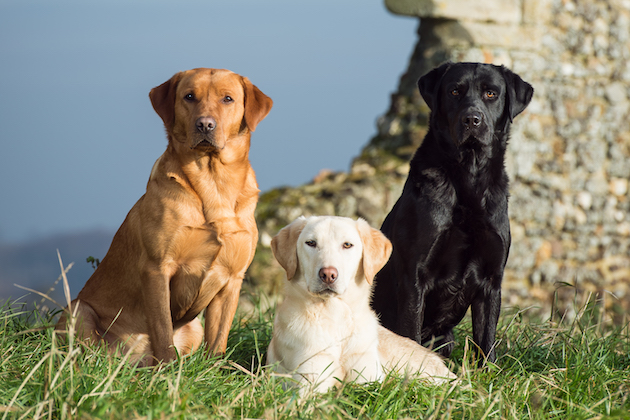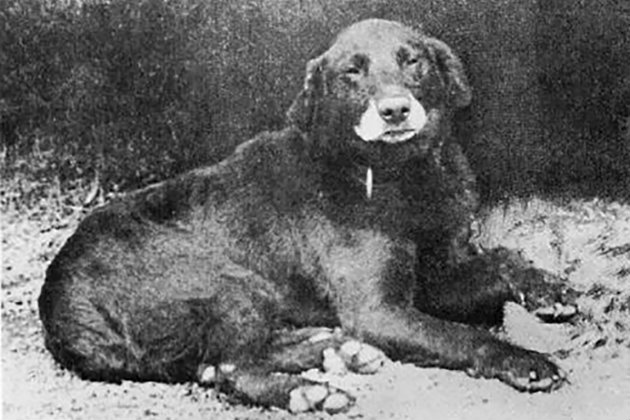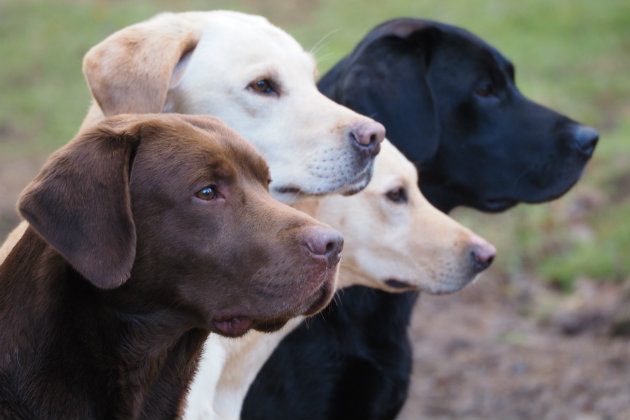Win CENS ProFlex DX5 earplugs worth £1,149 – enter here
What makes the perfect labrador?
 Labrador
Labrador
Is the perfect labrador a product of breeding or training? There is huge variety in the breed and starting a discussion about what makes a perfect labrador will inevitably draw out some firmly-held opinions. (Ever heard of a silver labrador?)
Around 35,000 labs are registered with the British Kennel Club each year, compared with around 9,000 springer spaniels. In the US, the labrador has ranked number one for 26 years in a row.
Labrador retrievers were originally called the lesser Newfoundland or the St John’s water dog. They were brought back from North America separately by the Earl of Malmesbury and the Duke of Buccleuch, and both men had the same intention of using their dogs as sporting dogs.

Buccleuch Avon is considered to be the ancestor of all modern Labrador retrievers
The labrador grew in popularity because its short, thick coat was deemed preferential to the longer, higher-maintenance coats of some of the other retriever breeds. The Kennel Club, which set the breed standard, describes the labrador as: “Strongly built, short-coupled, very active; broad in skull; broad and deep through chest and ribs; broad and strong over loins and hindquarters.” The labrador should not have excessive body weight or excessive substance and should have an “otter tail”, which is thick at the base and carried low.

The Labrador has been the UK’s most popular dog breed for nearly three decades
So if this is the standard why is there such a degree of variety of registered pedigree labradors? The answer is people and our perceptions. (Read more about labrador colours.)
Labradors were created by two aristocrats in their private kennels. The Earl and the Duke originally had an image of what they wanted to produce and others have added their own stamp, for better or worse. In addition to selective breeding, other breeds have undoubtedly been crossed with the labrador to try to improve the breed.
Strengths and weaknesses
When breeding a labrador at our Mordor Gundogs kennels in Perth, we don’t use some new up-and-coming champion or championship winner — we look at our bitch’s strengths and weaknesses and try to find a dog that complements them. Just because a female is attractive and a good worker does not mean she will produce good offspring. We like to keep a number of our puppies to train to make sure they are the type we want to produce. (Read these tips on training a labrador puppy.)
We want a healthy dog with a kind, easy-going temperament. We like a strong, good-looking dog with a good double coat as well as one that is keen to learn and please. Gentle dogs are generally preferred, but we are careful not to mate two soft dogs for fear of producing timid puppies.
A lab that does not look like a lab is not a lab. However, a lab that cannot jump a fence with ease, do a full day on a grouse moor and be ready for another, is also not a lab.
Fit and active
Labs need to be fit and active but the modern obsession with speed, often confused with drive, is a misplaced one. When working thick cover or heather, looking for a tucked-in wounded bird, speed can be a bad thing. The fast dog will often be eye-wiped by the steady, methodical pace of the traditional lab. I want level-headed reliability.
Then there’s the average family labrador. Some work, most don’t, but they comprise a large proportion of the labradors out there today. What is important is that this large majority of owners know what they are looking for when buying a labrador. (Read this advice on buying a labrador puppy.)
A championship-winning field trial dog or a best-in-breed show-winning dog does not necessarily produce good working pets or family dogs. For a pet labrador the big draw is temperament.
What about trainability and confidence? Bold, confident dogs might do well in competition as they have the drive to handle the rigours of trials. Yet if they are too headstrong, most trainers will find them a handful. An overly soft-natured dog might be easy to train, but might be too timid to ever be an outstanding worker in the field.
Breeding advice
If you are breeding from your labrador spend time picking a mate. Think about your dog, her family and what you are trying to produce your puppies for, and then find a dog to complement her. Read these important health checks you must carry out before breeding labradors.
Meet the dog beforehand, learn about his temperament and have a good look at him. Ask to see some of his progeny. What you are breeding will greatly influence the new owners’ lives, so make sure you do your best to make it a good experience.
Related Articles
Get the latest news delivered direct to your door
Subscribe to Shooting Times & Country
Discover the ultimate companion for field sports enthusiasts with Shooting Times & Country Magazine, the UK’s leading weekly publication that has been at the forefront of shooting culture since 1882. Subscribers gain access to expert tips, comprehensive gear reviews, seasonal advice and a vibrant community of like-minded shooters.
Save on shop price when you subscribe with weekly issues featuring in-depth articles on gundog training, exclusive member offers and access to the digital back issue library. A Shooting Times & Country subscription is more than a magazine, don’t just read about the countryside; immerse yourself in its most authoritative and engaging publication.







